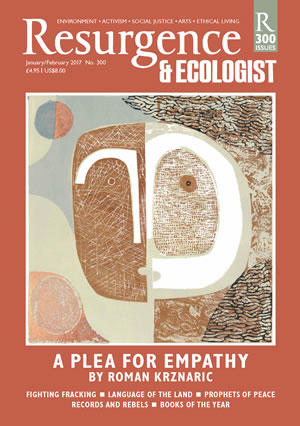For a man with an allergy to apples, Pete Brown makes a devoted chronicler of that most English of fruits and its cultivated habitat, the orchard. He grew up munching Golden Delicious, but an adult bite into an organically grown Kingston Black made his throat swell and itch, putting the crunch of a crisp apple forever beyond him.
Brown is a writer and broadcaster specialising, so he says, in “making people thirsty”. He’s best known as an authority on craft beer and pubs, winning a Gold award from the British Guild of Beer Writers in 2015. With photographer Bill Bradshaw, he’s also pressed out two vintage eulogies to the culture of cider.
The apple has since cast a deeper spell on him, broadening his fascination beyond cider to explore the history, tradition and folklore of the English orchard. The book is a journey through the country’s great apple-growing counties, starting with a May Day celebration on a hillside between Gloucestershire and Herefordshire and finishing up with a cider-fuelled wassail in a Somerset farmyard in January.
He opens with an account of the genetics and history of apple growing. Malus domestica came first from the apple forests of what is now Kazakhstan, migrating along the old spice routes into Europe. Apples have been foraged in the wild for 11,000 years, and the techniques of grafting were well established by the time of Alexander the Great. Every apple of any variety is ‘cloned’, a cutting of a cutting of a cutting.
Brown gives us a taste of apple folklore, from Snow White and the Brothers Grimm to the legends of Avalon and the golden apples of immortality. He cuts open an apple two ways, finding shapes reminiscent of female genitalia and the pentagram. And he begins his odyssey through the apple year with a visit to Dragon Orchard in Herefordshire at blossom time.
He visits Stanmer Park in Sussex to learn chip-bud grafting with Brighton Permaculture Trust, travels to the century-old East Malling Research Station in Kent to learn about rootstocks, drops in on the National Fruit Collection at Brogdale Farm in Kent, which maintains a collection of 2,200 apple varieties, and joins the harvest at Glastonbury on a three-legged stepladder.
Brown plucks a wealth of scientific and historical information from his subject. It ranges from genetics – only 20% of today’s apple genes still match their Kazakhstani origins – to climate change – Kentish apples now come into blossom three weeks earlier than they did in the 1960s – to the ecology of an orchard and the crucial importance of pollination. Historic varieties like the Bramley are highlighted.
Changing fashions veer from the Victorian love affair with apple trees, driven by a succession of more or less eccentric visionaries, to the indifference of the Thatcher years. Brown has an acute understanding of the marketing pressures that have standardised the fare on offer in supermarkets as tastes have shifted to a sweeter apple, and of the economic drivers behind new patterns of planting or storage.
He’s equally at home with the views of a modern marketer – “the first bite is with the eye” – as with the mythology of apples. There’s a lengthy passage in which he explores the story of Eden, concluding that the forbidden fruit may not have been an apple at all. Instead, he speculates that the apple became a kind of “everyfruit”, dense with symbolic meaning. He’s also good on the stubborn, dedicated folk who guard the traditions of apple growing in remote corners of the countryside.
Sometimes the narrative seems to meander, as if Brown were a knowledgeable pub raconteur switching at will from one aspect of his subject to another. But his enthusiasm carries the book, offset by an occasional tartness and the odd unexpected pop-culture reference. And with the closing account of a traditional Somerset cider pressing, he’s back to making people thirsty again.






